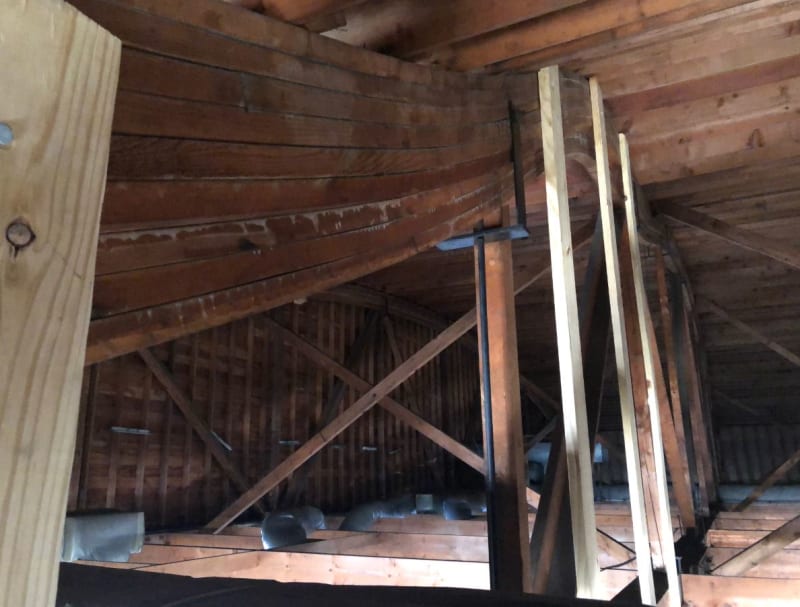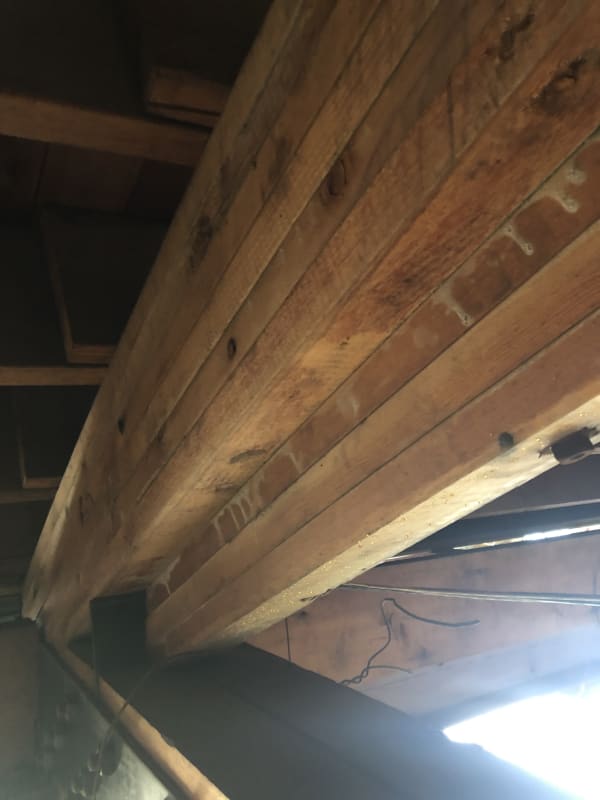Hello,
I am currently working on a project with some wood bowstring trusses that span 120 ft and are 16 ft deep at the center. I'm assuming based on conversations with contractors in the area that these were constructed in the late 1950's or 1960's. I do know they were built on site and the top chord consists of a glulam SP member that is (6) 1 5/8" x 9 1/4" with an additional (3) 1 5/8" x 3 1/2" glulam section attached to the bottom of the larger section. The bottom chord is (2) 4 1/2 x 11 members. The panel points are 12 ft o.c. with a vertical 3 1/2" x 3 1/2" member at each location. Evert vertical has a steel plate at the bottom chord and top chord with a steel rod on each side of the chord. The diagonal members are strange, they consist of (2) 2x6's in an "L" shape nailed together.
The building has been vacant for roughly 15 years and a developer is bringing it back to life.
I'm using Risa 3D to model this and the web's are failing with just the standard roof loading. Adding the unbalanced loads makes it look as if this thing should never had been standing in the first place. The interior changes are adding additional supports under some of the trusses and others are getting full height walls built under them for support. This is causing a lot of web members to go into compression and reinforcement needing to be installed.
My question is, would this type of truss be designed as an arch with a tie? I'm treating it like a typical truss analysis. I can't find any sources of information regarding a truss design like this.
Any input, assistance or advice is greatly appreciated.
I am currently working on a project with some wood bowstring trusses that span 120 ft and are 16 ft deep at the center. I'm assuming based on conversations with contractors in the area that these were constructed in the late 1950's or 1960's. I do know they were built on site and the top chord consists of a glulam SP member that is (6) 1 5/8" x 9 1/4" with an additional (3) 1 5/8" x 3 1/2" glulam section attached to the bottom of the larger section. The bottom chord is (2) 4 1/2 x 11 members. The panel points are 12 ft o.c. with a vertical 3 1/2" x 3 1/2" member at each location. Evert vertical has a steel plate at the bottom chord and top chord with a steel rod on each side of the chord. The diagonal members are strange, they consist of (2) 2x6's in an "L" shape nailed together.
The building has been vacant for roughly 15 years and a developer is bringing it back to life.
I'm using Risa 3D to model this and the web's are failing with just the standard roof loading. Adding the unbalanced loads makes it look as if this thing should never had been standing in the first place. The interior changes are adding additional supports under some of the trusses and others are getting full height walls built under them for support. This is causing a lot of web members to go into compression and reinforcement needing to be installed.
My question is, would this type of truss be designed as an arch with a tie? I'm treating it like a typical truss analysis. I can't find any sources of information regarding a truss design like this.
Any input, assistance or advice is greatly appreciated.


